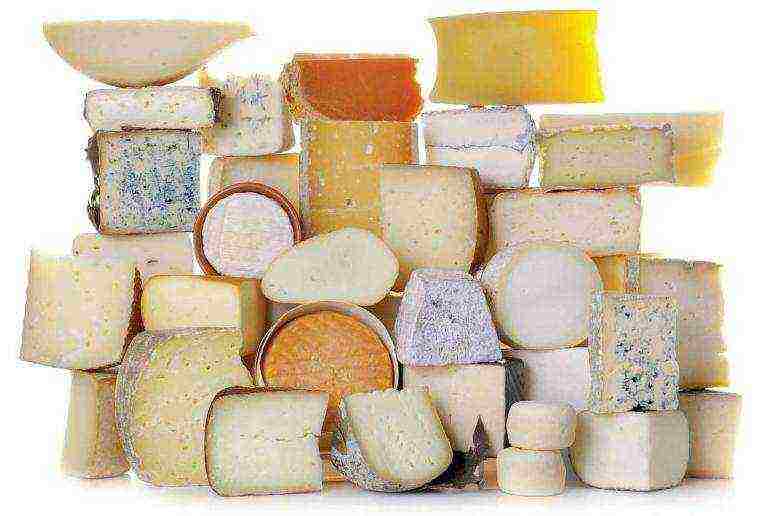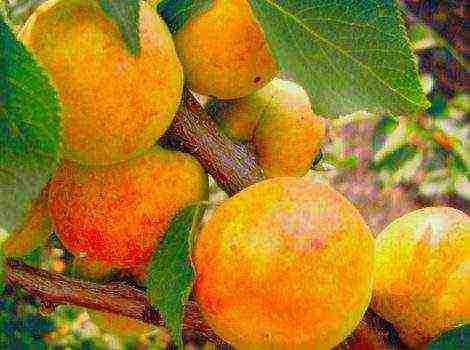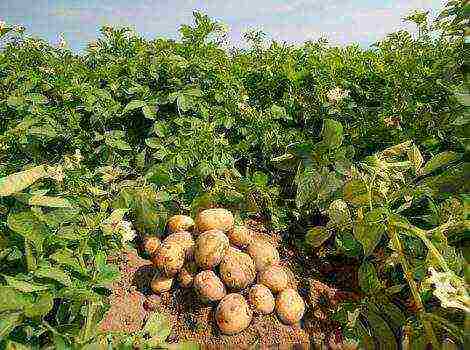Content [show]
If you love cheese, then you have probably already tried many different varieties. What cheeses are the most demanded and popular? Find out and be sure to try what you haven't tried yet!

The most popular and delicious cheeses
We bring to your attention the top 10 most delicious cheeses in the world:
1. Mozzarella - delicious and delicate cheese originally from Italy. Traditionally, it was made from buffalo milk, but today the stores sell mozzarella from cow's milk, which is common for everyone. This cheese looks like white balls of small diameter soaked in a weak brine.
The product is soft and very delicate, with a pleasant taste. When preparing such cheese, milk is first fermented with a special thermophilic lactic acid culture. Then it coagulates thanks to rennet. After that, the whole composition is heated, and the whey is separated.
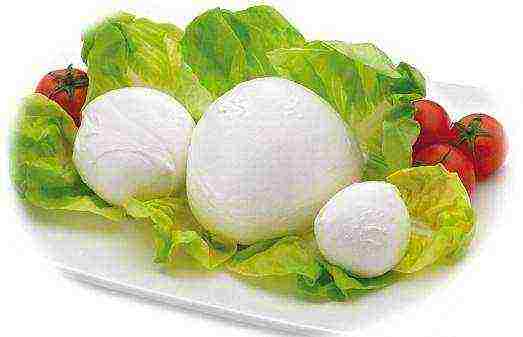
Then this mass is thoroughly and actively kneaded, periodically dipping it into hot water, until a homogeneous viscous mass is formed. Then balls, cubes, pigtails and much more are formed from the finished mass. The finished cheese is placed in a solution in which it is stored. The shelf life is short, so it's best to eat the Mozzarella as soon as possible. This cheese, by the way, can be added to salads.
2. Maskrapone. This cheese looks more like delicate creamy cottage cheese or even yogurt. It tastes incredibly delicate, slightly sweetish. The consistency of the product is more like a curd mass.
The homeland of such a product is Italy (in this country, incredibly tasty cheeses are generally made). To prepare Maskrapone, cream with a fat content of 25-30% is first heated in a water bath to about 80 degrees, then lemon juice, wine vinegar or tartaric acid are added to curdle milk protein.
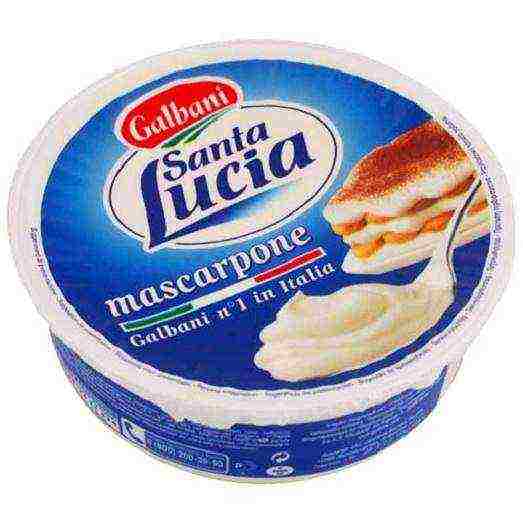
After that, the mass is heated, then cooled and placed in nets to remove serum. You can't call such cheese a dietary one, but it is incredibly tasty. Desserts are often made from it, the most popular of which is tiramisu.
3. Bree - a tender and soft cheese made from cow's milk, originally from France. Previously, it was available only to kings and the rich, but today everyone can taste it. The cheese is a flat cake with a thickness of 3 to 5-6 centimeters and a diameter of 30-60 centimeters.
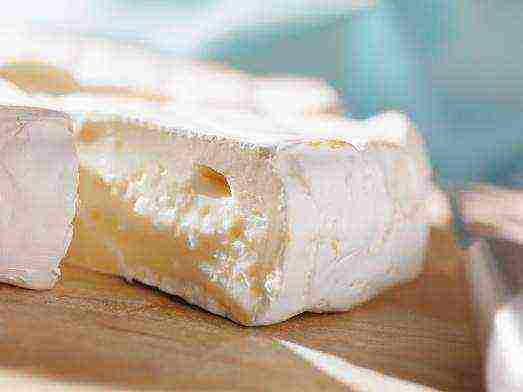
Such a cake is covered with a noble white mold that resembles white velvet (it is quite edible). The smell has an ammonia tint. The taste of this cheese can vary from fruity to pronounced mushroom (it all depends on the aging of the product). Brie is similar in consistency to processed cheese. It is best served not cold, but at room temperature. Brie is considered a versatile cheese as it pairs well with a variety of drinks and foods.
4. The list includes Parmesan... It is a hard cheese with a long maturation. Some believe that the recipe was presented to the world in 1200 by monks, since then nothing has changed. The cheese is so hard that it can crumble when cut. It tastes at the same time moderately spicy, salty, piquant and tender. Manufacturing technology is complex, and the maturation process is very long.
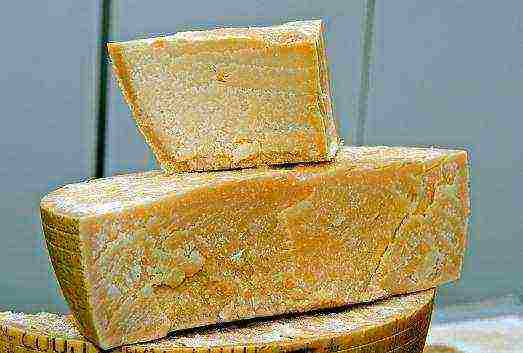
To obtain 1 kilogram of cheese, it usually takes about 16 liters of milk, and maturation can take from one to three years. The older the product, the more pronounced the hazelnut flavor.
In the homeland of cheese, which is Italy, there are special people who determine the maturity of Parmesan with silver hammers (they are called rumors).After a year of aging, the cheese is checked. Some are rejected, branded and removed (such a product may go on sale, but under a different name), and some are sent to mature for at least another year.
5. Cambotsola... It is made by the best cheese makers, the homeland of the product is Germany. In general, this is a German blue cheese that combines the qualities of the Italian Gorgonzola cheese and the French Camembert (the name, by the way, appeared by combining the names of these two varieties).

Such a product was patented by one of the German companies in the 70s of the last century. For the production of this cheese, a special specially prepared mold is used, and the softness and tenderness of the consistency is achieved by adding cream. The result is a delicate and tasty cheese with moderate pungency. Best of all, such a product is eaten with fruit and after the disclosure of the aroma (for this, it is better to use it an hour after cutting).
6. Camembert - tender French cheese with a fluffy white mold crust. It tastes delicate and has mushroom notes. Camembert is prepared from whole milk. For coagulation, rennet is used.

In the process of folding, the mass must be stirred periodically. Then the composition is moved into molds and dried in a special way (this requires the skills of experienced cheese makers), and then salted. Then the cheese will ripen under certain conditions until fully cooked.
7. Dor Blue - blue cheese with mold originating from Germany. For a long time, this cheese was practically the only one of its kind, available for sale in some countries (including the former CIS countries). The recipe was developed especially for lovers of moderately spicy and savory cheeses.

The composition itself and the peculiarities of preparation are still kept secret by cheese makers, but it is known that special molds are used, as well as cow's milk. This type of cheese is best combined with grapes and nuts. If there are several varieties on the table at once, then it is better to leave Dor Blue for last.
8. Gorgonzola... Guess where he comes from? That's right, from Italy. This variety is quite popular and has a tart, moderately spicy and piquant taste. This product belongs to blue blue cheeses.
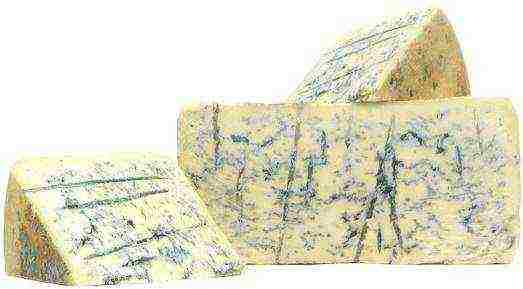
For manufacturing, cow's milk is used, to which penicillus fungi are added (they are injected with syringes) and special enzymes. Throughout the ripening process, which takes from 2 to 4 months, special metal rods remain in the cheese, providing access to the oxygen necessary for the life of the fungi.
9. Tete de Moine... The name of such cheese literally translates as "monk's head". And it was the monks who were the first to prepare this product. The homeland of cheese is Switzerland, it is exclusive and very expensive. For production, the freshest cow's milk of summer milk yield is used.
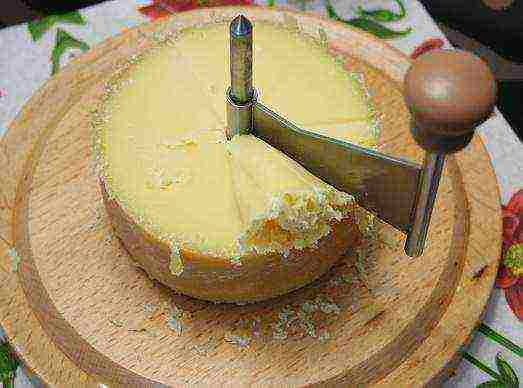
The cheese ripens for at least 70-80 days in wet cellars on spruce boards. During the maturation process, the heads are sprayed with a special saline solution with the addition of live bacteria. The result is a cheese with a yellow flesh, a dense texture and a brown crust.
10. Roquefort. This cheese belongs to blue varieties and is produced in France. Initially, this product was prepared from sheep's milk, but today cow's milk is also used. Milk is fermented, the mass is cut and laid out in forms and salted. An important feature is maturation on oak shelves in a limestone grotto under conditions of sufficient ventilation.
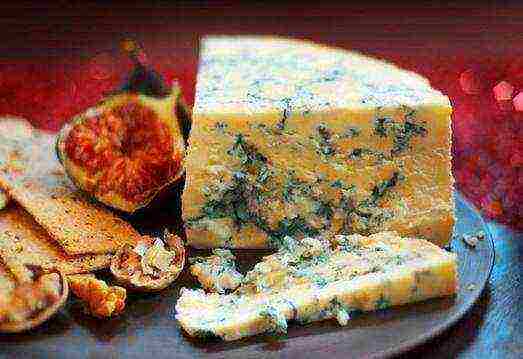
Here are the tastiest and best cheeses in the world. Which one will you try first?
Pule
Bullet. Pule cheese is considered the most expensive in the world. For a kilogram of this culinary delight, you will have to pay about $ 1275. Such a high price is due to the fact that milk from donkeys of the Balkan breed is used for its production. These rare animals live only in the Serbian nature reserve Zasavitsa, which is located near Belgrade. To produce 1 kg of finished cheese, at least 25 liters of fresh milk will be required.The cheese has a crumbly white consistency and a spicy-salty taste.
Halloumi
Halloumi. The first thing a tourist visiting Cyprus should try is Halloumi cheese. After all, you cannot imagine a real Cypriot meal without Halloumi cheese. It is made from sheep and goat milk and mint. This unique cheese cannot be melted even on a grill at high temperatures. Halloumi pairs well with watermelon or cold beer. It tastes softly spicy, slightly salty and leaves a pleasant sour-milk aftertaste.
Bree
Bree. This unsurpassed delicious cheese has been produced in France for several decades. Initially, Bree was only available to high-ranking officials. And not so long ago, it became popular among all segments of the population. Depending on the timing of ripening, the flavor of Brie cheese can vary from mushroom to fruity. It is usually added to vegetable or fruit salads.
Roquefort
Roquefort. World famous French blue cheese. Its production began in 1700 and to this day, its maturation takes place in natural caves. Its readiness is determined with a silver mallet. Only true cheese makers can tell by sound whether Roquefort is ready to eat. To feel the rich flavor palette of this cheese, you should combine it with the classic wines Cahors, Sauternes, Porto.
Stilton
Stilton. There are several varieties of this cheese. The first is called the blue stilton, and the second is called the white. This distinction depends on the color of the mold with which the cheese is covered. There is also a gold Stilton, which is not available to everyone. Indeed, for a kilogram of such a delicacy, you will have to pay about $ 1,000. The technology for the production of each type of Stilton cheese is patented. It is prohibited by law to manufacture it outside the English counties of Derbyshire, Leicestershire. The main feature of this cheese is that it is not subjected to pressure during the production process. In addition, Stilton is one of the elite cheeses in England. Stilton has a pungent taste and strong aroma.
Pecorino
Pecorino. It is believed that the first production of this cheese began more than 2 thousand years ago in a small Italian village. Today, Pecorino cheese is prepared only on the island of Sardinia. For its production, they use the milk of sheep that grew up on this island. The cheese goes through several stages of pressing. Due to this, it turns out to be very hard and dense. Pecorina is famous for its exquisite and unique aroma that can enhance the taste of any dish.
Nettle cheese
Nettle cheese... Today there are two varieties of nettle cheese. The first type is called Yarg and is prepared according to an old English recipe. During the production process, the curd is wrapped in nettle leaves and left to ripen until mold forms on top. The structure of this cheese can be creamy or crumbly. Not so long ago, an alternative recipe has appeared, according to which it is required to add chopped nettle leaves to the prepared cheese mass.
Danable
Danable. Cheese production was founded over 100 years ago by the Dane Marius Boel. Initially, he tried to copy the technology of the French Roquefort. But instead of sheep's milk, cow's milk is used. Danablu matures in two to three months. During this period, the cheese is pierced several times with steel needles. This is done in order to enrich the inner layer with oxygen. The result is a product with bluish mold streaks.
Emmental
Emmental. This cheese is called true Swiss. Its production technology was founded in 1293. Cow's milk is used to make Emmental. The carbon dioxide released by the bacteria provides the cheese with large internal holes. Emmental has a pleasant spicy taste and a slightly sweet aftertaste. It is often used to make fondue.
Gruyere
Gruyere. Another traditional Swiss cheese that gets its name from the region where it is produced. Its production technology consists of several stages. First, the milk is heated and combined with the sourdough. When the mass is curdled, it is crushed into small peas and boiled again at a temperature of 54 °. Then the cheese mixture is sent to the press. After a couple of days, the head of cheese is lowered into the salt bath. After that, the cheese is sent to a special storage facility for long-term maturation. But then the cheese maker periodically has to water the Gruyère with salty solution. The cheese will be ready in six months. But elite specimens need to be kept for more than 15 months. The composition of the Gruyere is quite dense with a nutty flavor.
Cheddar
Cheddar. One of the popular English cheeses is Cheddar. It got its name in honor of the village of Cheddar, where it began to be produced. It will take at least 60 days to make the cheese. And the most valuable samples have to go through a long maturation path, which ranges from a year to 5 years. Typically, Cheddar cheese heads reach 25-35 kilograms, shaped like a cylinder. The finished delicacy has a nutty-sour taste.
Red Windsor. This cheese attracts everyone with its unusual appearance. The production technology is very similar to Cheddar. The only difference is that red wine is sprinkled on it a few days before the final ripening. After that, it will take a few more days to keep the product under pressure. The finished Red Windsor has a dense structure with marble streaks. The cheese has a bright smell and leaves a wine aftertaste.
Camembert
Camembert. The famous French cheese is made from cow's milk. The main feature of Camembert is its soft pasty consistency. Such a viscous mass is achieved due to a special technology: this cheese is not placed under a press. According to legend, Camembert was first prepared in 1791 by a Norman farmer who tried to recreate Brie cheese. But she got a special product that is very popular among cheese connoisseurs.
Parmesan
Parmesan. Italian masterpiece, which is also called the king of cheeses. For its production, hand milk is used only from those cows that ate grass growing in certain provinces of Italy. It will take at least a year to fully ripen the cheese. Italians are proud of the Parmesan recipe and claim that its technology has never been violated for over 100 years. The weight of one head of finished cheese reaches 44 kilograms, and the crust is 1 cm thick. The aroma of Parmesan cannot be confused with another cheese. It is sweet with fruity notes.
Tete de Moine
Tete de Moine. A true Swiss cheese, the name of which translates as "monk's head". For its production, cow's milk obtained in the summer months is used. It takes three months for the cheese to ripen. The finished cheese has a firm consistency and a strong aroma. Tete de Moine is quite nutritious and satisfying. 100 grams contains about 400 kcal. Cheese is usually consumed with white wines.
Mascarpone
Mascarpone. Italy is considered the birthplace of Mascarpone. It is prepared from cream with 75% fat, which must be heated to 85 °. Then tartaric acid is added to the resulting mass. After that, the cheese must be refrigerated for 12 hours. Mascarpone can hardly be called dietary, but it has no equal in taste. The delicate mass resembles both yoghurt and cream at the same time. This cheese is often used to make tiramisu and other soft desserts. Markarpone is recommended to be consumed cold, and powdered sugar will be an addition to it.
Mozzarella. It is a low-calorie cheese made from black buffalo milk. It is customary to eat mozzarella with basil, spinach, tomatoes, pepper, olive oil. This cheese is often used for making pizza, pasta, lasagna. Also, mozzarella goes well with fresh vegetables and herbs. There are several types of this cheese.The most delicious is giornata, which can be tasted only in Italy.
Gorgonzola
Gorgonzola. The popular Italian blue cheese combines spicy and sweet taste at the same time. The aroma has a subtle smell of nuts. For the production of Gorgonzol, cow's milk and enzymes are used. To reach the inner green stripes, injections of the penicillus fungus are injected into the almost ripe cheese. After that, metal rods are inserted into the head of the cheese and left to ripen. The total ripening time is 4 months.
Cambozola
Cambotsola. A blue cheese combining the flavors of Camembert and Gorgonzola. Today Cambazola is recognized by cheese connoisseurs all over the world. For its production, cow's milk, salt, enzymes, cream are used. The top of the cheese is covered with a layer of white mold, and inside there are its blue veins. Cambotsola goes well with wine and fruit.
Dor blue
Dor blue. Classic German cheese with a bluish tinge. It is customary to eat it with grapes, nuts and write it down with white wine. Dor blue is made from cow's milk and noble mold. Cheese production started relatively recently. Dor Blue was first released in the early 20th century in Germany. This product has tremendous benefits for the entire body. Regular consumption of this cheese will help get rid of some infections and internal diseases.
close on topic:
Cheeses are popular in varying degrees in all countries of the world. The variety of varieties of this fermented milk product is truly amazing. In France alone, and in this country there is a real cult of cheese, there are more than 500 varieties of cheese! Hard and soft, spicy and sweet, blue cheeses and cheeses with holes, they are all prepared differently, but there are some of the most popular and beloved varieties bought all over the world. We will talk about them today.
The best cheeses in the world
Of course, tastes differ. Someone adores cheese, and someone is completely indifferent to it, but among such a variety of varieties, everyone will surely find something that they really like. In addition, it is important to know with which wine or sauce it is better to combine this or that cheese. This product is the best appetizer for wine, the French know a lot about wines and cheeses, and their most popular appetizer for wine is just cheese platter.
1. Parmesan. Everyone has heard about this Italian cheese, but not everyone has tried or even seen it on the counter. It is the hardest cheese in the world and matures between 12 and 36 months. To obtain one kilogram of Parmesan, as much as 16 liters of milk are required, but thanks to the unique Italian technology, the output is a unique cheese with a deep aroma and hints of hazelnut. A finished head of cheese sometimes weighs up to 40 kilograms, so cheese is always sold in stores already packaged. When slicing, cheese very often crumbles - it is so hard.
2. Mozzarella.This Italian young cheese is also popular with many. Traditionally, this cheese is made from the milk of young buffaloes, but in recent years, examples from cow's milk have begun to appear. Mozzarella cheese is difficult to confuse with any other, as it is sold in the form of white cheese balls soaked in brine. This cheese is very delicate in taste, it is actively used in the preparation of salads, pizza, lasagna, etc.
3. Maskrapone.And again, the cheese comes from Italy. Mascarpone is an Italian cream cheese, more like cream or soft butter in appearance and consistency. It is this cheese that is often used in the preparation of desserts such as tiramisu. It is very greasy and is often smeared on sandwiches instead of butter.
4. Cambotsola.But this is already German cheese. It is a moldy cow cheese that combines features of two cheeses: Gorgonzola and Camembert. Cambotsola is a soft cheese with a distinctive aroma and rich taste.
5. Bree.One of the most famous and ancient French cheeses.This soft cow's milk cheese with a moldy crust used to decorate the dining table of French kings, so Brie cheese was already appreciated in the Middle Ages. This cheese has always had many admirers and is really worth trying at least once in your life. Could it be love? Brie is a soft and very tasty cheese with a slight smell of ammonia. The older the Brie cheese, the spicier it is. Its aroma is quite specific, you need to get used to it.
6. Dorblu.German blue cheese, in other words - blue cheese. Contrary to the common misconception, not every blue cheese is Dorblu cheese, but in the vastness of the post-Soviet space, this mistake is very common. Dorblu is a dense and crumbly light cream-colored cheese with bluish veins. It goes well with nuts, fruits and dry red wine.
7. Camembert.French soft fatty white cheese with a delicate mushroom taste and unsurpassed aroma. Made from cow's milk. It is difficult to confuse it with any other cheese, since on the outside it is covered with a white, moldy fluffy crust, and on the inside it is soft. Today this cheese is very popular both in France and abroad.
8. Gorgonzola. A bittersweet blue Italian cheese, originally from Italy, ripens in 2-4 months. When this cheese is cut, green stripes are clearly visible on the cut. This cheese is often positioned as a dessert cheese. It goes well with red wines.
9. Roquefort.World famous blue French cheese, previously made exclusively from sheep's milk. Today it is also made from cow's milk and is highly valued all over the world, including in Russia. Top of this cheese is covered with a white shiny and slightly damp crust. Roquefort is distinguished by a bright taste of hazelnuts with a complex spicy aroma.
10. Tete de Moine.Semi-hard Swiss cheese made from cow's milk. Its name can be literally translated as "Monk's head". And the name contains the history of the origin of this cheese, because this cheese is a monastery. It was created 800 years ago in the Belle Monastery and even served as a monetary equivalent. The traditional recipe for making this amazing cheese has not changed for several centuries. It is also not customary to cut it, but only to scrape it off. Tête de Moine goes well with dry white wine.
11. Cabrales.Semi-hard Spanish blue cheese, made in unique conditions, namely in the caves around Cabrales. It goes well with young red wine.
12. Cheddar.Cheddar is a cheese loved by chefs from all over the world. This is a bright English hard cheese made from whole milk with a nutty, slightly spicy and sour flavor.
13. Gruyeres. Hard Swiss cheese of yellow color with a pungent spicy aroma and nutty taste. Depending on the ripening time, Gruyère tastes differently. Young Gruyère is called “soft” and matures within 5 months, “semi-salty” Gruyère matures for 8 months, “salty” - 10 months, “premium” - more than a year, “old” - from 15 months.
14. Conte. The famous semi-hard French cheese, made exclusively from the milk of the following breeds of cows - Simmental and Montbéliard. This cheese ripens within 8-12 months. Conte cheese is distinguished by a pronounced sweetish nutty taste, but each cheese head has its own unique flavor. This is due to the different manufacturing conditions as well as the seasons. In total, there are 90 shades of Conte cheese, and 6 main tastes: fruit, milk, roasted, spicy, herbal and animal. This cheese is one of the most loved in France, it is served both as a separate dish at the end of a meal, and as an ingredient in other dishes. Conte cheese goes well with any wines.
15. Emmental. Semi-hard cheese originally from Switzerland. It is distinguished by a spicy, spicy-sweet taste, large cavities inside the head of cheese (holes).This cheese is freely produced in many countries around the world, so if you see a cheese with this name in a store, it does not mean that it was brought from Switzerland.
Have you ever tried any cheese from the list above, and did you like it?
You may also be interested in
Cheese has been known to mankind for about 10 thousand years. According to legend, the recipe for making cheese was invented by accident. A certain unlucky merchant was transporting milk in a container made from a mutton stomach. Upon arrival, he saw that the milk was sour and separated into whey and dense cheese mass.
In the ancient world, cheese was considered the food of the gods. This product was popular in the Roman Empire - more than a dozen varieties of cheese were invented by the people of the Rim. In the Middle Ages, cheese was made and the culture of its consumption was maintained by monks of the Cistercian and Benedictine orders.
There are cheeses for the general public, and there are gourmet cheeses that can age up to two to three years. The most popular types of cheese are supplied by Holland, Switzerland, Italy, Frinzia.Cheese - an excellent and tasty product both for a festive table and for everyday use. There are cheeses for the general public, and there are gourmet cheeses that can age up to two to three years.
What cheeses you should definitely try:
1. Cabrales (Cabrales). Spanish blue cheese, savory, slightly similar in taste to French Roquefort, but with a sharper aroma. The fat content of this cheese is about 45%. Carbales is produced only in one Spanish province called Asturias. To prepare such a cheese, you need a mixture of sheep, cow and goat milk, as well as ... a limestone cave. In the caves of Asturias, there is a high air humidity (about 90%) with a specific microclimate in which an amazing unique fungus lives, Spanish cabrales cheese, which forms a noble blue mold. It is found only in high-mountainous Asturias, and nowhere else. Here cabrales cheese is aged on wooden shelves from 3 months to six months.
2. Cake del Casar (Extremadura) (Torta del Casar (Extremadura)). Soft Spanish cheese. This cheese is produced in the province of Extremadura, in the vicinity of the town of Casar de Caceres. The first documentary evidence of the existence of this cheese dates back to 1791. It is made from unpasteurized milk of Merino and Entrefin sheep, which are distinguished by low milk yield, therefore, to obtain five liters of milk, twenty animals must be milked, and from five liters of milk you can get only one kilogram of cheese. The structure of the Torta del Casar cheese is creamy, the taste of sheep's milk, salty with a slight bitterness, a consequence of the use of artichoke.
3. Parmesan (Parmesano). A hard cheese made from cow's milk, native to the plains of Lombardy in Italy. This is one of the most famous cheeses in the world. Parmesan has a thousand-year history. This cheese was invented by Benedictine monks who needed a product that retains its useful qualities for a long time. Long shelf life has become one of the clear advantages of Parmesan, which instantly became popular in many countries of the world. To make Parmesan, you need to use milk from cows born and raised in Italy. Each year, the cheese-making process begins on April 1, when the evening milk yield remains in buckets for the whole night. In the morning, the resulting cream is removed to use it to prepare the famous Mascarpone. After that, the resulting milk is mixed with whole morning milk, heated to a temperature of 35 ° C and a ferment is introduced from the gastric juice of the calf (the calf must also be Italian!). When a curd appears, then the mass is cut into small pieces and heated to a temperature of 50 ° C. When boiling cheese, which lasts about an hour, the whey is periodically removed. Then the cheese is wrapped in a cloth and left for a while (usually 2-3 hours).When the period comes to an end, the Parmesan is laid out in a wooden form. The cheese is stored in wooden molds for several days. Then cheese ripening continues on the shelves. The process usually takes from one to three years.
4. Gran Reserva Deesa de los Llanos (Gran Reserva Dehesa de los Llanos). This is a typical Spanish cheese from La Mancha, handcrafted from raw unpasteurized milk from sheep on private farms. Has a natural crust, which is cleaned from time to time with extra virgin olive oil. This cheese ripens for at least nine months. A cylindrical head of cheese with a recognizable ribbed crust of a dark color with a zigzag pattern weighs on average. This cheese is mentioned in the legendary creation of Cervantes Don Quixote from La Mancha, so the image of the famous character adorns the label of each cheese head.
5. Roquefort Xavier (Roquefort Sélection Xavier). This is a French blue cheese made from sheep's milk. Manufactured in the Aveyron area in France
6. Taramundi (Asturias) (Taramundi (Asturias)). Aged semi-soft goat cheese. Only eighty pieces are produced by cheesemakers per day
7. Camembert (Camembert). French Camembert cheese can be confidently called legendary. In 1928, a monument was even erected in his honor. Camembert cheese was first born back in 1791. Camembert is a rather soft, fatty cheese. Whole cow's milk is used for its production. Sometimes a small amount of skim milk is added to whole milk. The most important thing is that the milk used for these purposes is of the highest quality - for this, the cows are grazed on special pastures. The finished cheese can have different colors - from soft cream to darker brick. The more time passes from the moment the cheese ripens, the more intense and piquant aroma it possesses. The cheese heads are covered with a slightly fluffy crust. Their pungent taste has a pronounced mushroom note. The production of this cheese is seasonal - it starts in September and ends in May.
8. Boffard (Boffard). Sheep cheese made from unpasteurized milk. Has a pronounced, slightly spicy aroma, with a long aftertaste and delicate aroma of dried fruits. Excerpt for at least 8 months
9. Payoyo gaditano
10. Cheddar (Cheddar). Hard cheese made from cow's milk is one of the most famous and oldest cheeses in England. The history of the creation of this cheese dates back to the time of the Romans, who were the first to show local residents how to make hard cheeses. It acquired its name in the 16th century, when the cheese was made from the milk of cows grazing in the green Mendip hills in Cheddar, Somerset. Much later, emigrants transported their cheese recipe to Canada, the United States, South Africa, Australia, and New Zealand. Since then, many cheese dairies around the world have tried to imitate the taste of English Cheddar, but only one that is made in one of the four counties of England in Somerset, Devon, Dorset and Cornwall can be called a real Cheddar cheese.
